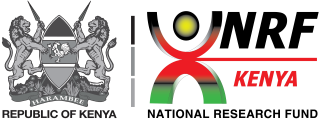Browsing by Author "Eshiamwata, George"
Now showing 1 - 2 of 2
Results Per Page
Sort Options
Publication Breeding phenology and population dynamics of the endangered Forest Spiny Reed Frog Afrixalus sylvaticus Schiøtz, 1974 in Shimba Hills, Kenya(Wildlife Informaon Liaison Development Society, 2022-07-26) Koskei, Alfayo; Eshiamwata, George; Kirui, Bernard; Cheruiyot, PhylusAfrixalus sylvaticus Schiøtz, 1974 is a species of hyperoliid frog inhabiting coastal forest Kenya. It is classified as endangered under IUCN B2ab(iii) ver 3.1 and occurs in the Shimba Hills National Park and hinterlands. Habitat loss and other human activities are threatening the species. Therefore, understanding the breeding ecology and population dynamics is important for its conservation. This study assessed the breeding ecology and population dynamics of the species in the protected and community landscapes in Shimba Hills National Reserve in Kenya. Data was collected through ecological surveys conducted from June 2016 to July 2017 using a visual encounter surveys (VES) method. The results show that the species was more abundant during the wet season than dry (58% and 42%, respectively). The population estimate was 192 individuals and a density of 0.98 individuals/km2. Regarding the morphology, the mean snout-vent length (SVL) for males was 15.12 mm and females 15.96 mm, but there was no significant difference (t-test = 0.87, p = 0.390, df = 39). The mean weight of both gravid and non-gravid females was 6.05 g and males was 4.82 g. The weights were statistically different between both sexes (t-test = 3.50, p-value = 0.001, df = 39). The sex ratio was 1:2 (male: female). There was more activity in the wet season (April and May), and the breeding habitats were reeds and water lilies. The threats identified to their habitat include; human activities such as bush burning, livestock grazing, drainage, and plantation of exotic tree species (Eucalyptus sp.) that have led to habitat loss and degradation. The study recommends that the reforestation processes such as plantation of exotic species such as Eucalyptus sp. and Casuarina sp. and bush burning in the wetlands and species habitats must be discouraged among the stakeholders (community and park management). Moreover, more synchronized studies are necessary to highlight the driver(s) of imbalanced sex ratios and species habitat shifts.Publication Effects of Population Growth on Urban Extent and Supply of Water and Sanitation: Case of Nakuru Municipality, Kenya(Journal of Environmental Management, 2019) Muoria, Elizabeth; Moturi, Wilkister; Eshiamwata, GeorgeUrbanization causes changes in social and environmental conditions with most of these changes impacting on the efficient provision of essential services such as water and sanitation. Nakuru Municipality was observed to be the fastest growing urban area in East and Central Africa. Research on patterns and trends of urban and population increase and their implication on water service provision and sanitation in urban Nakuru is very scanty. This paper presents findings from an assessment of the effects of population growth between 1999 and 2017 on urban extent and supply of water and sewage reticulation in Nakuru municipality and surrounding peri-urban areas. Data was collected through remote sensing and administration of questionnaires to urban Nakuru residents and key informants from NAWASSCO respectively to elicit information on the water supply network and sewerage reticulation in Nakuru municipality for the period 1989-2014. Geographic Information System (GIS) was used to analyze the data on time series. The results indicate that the population of Nakuru municipality and surrounding peri-urban areas has increased by 56.8% whereas that of built-up area has increased by 182.5% in the same period through densification of the urban core and expansion to the peri-urban areas characterized by urban sprawl. The water supply network and sewerage reticulation increased by 236km and 89km respectively within Nakuru municipality. The analysis of the maps shows that water supply network and sewerage reticulation are concentrated in the area around the urban core with very little spread. This means that the residents on the outskirts of Nakuru Municipality are not well served by the water supply network and sewerage reticulation. The study recommends involvement of all stakeholders in urban planning and in the water sector in order to increase water supply network and sewerage reticulation coverage both in the urban and peri-urban areas.

